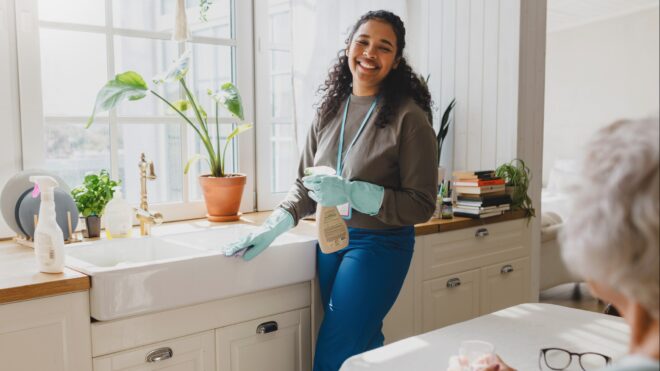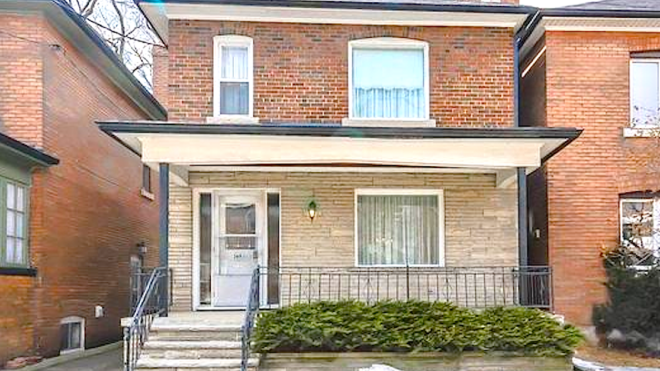There is a reason why the saying, “Home is where the heart is,” exists. We feel like we can drop our guards and be completely ourselves in our homes because it’s a safe place where we feel most secure and happy.
That is, until someone breaks into our house…
Being burglarized or experiencing a home invasion can be a life-shattering experience that affects everyone in the household, like this family that had all their possessions stolen a few days before Christmas.
According to statistics from the FBI, two million American households are burglarized each year — and one is broken into every 13 seconds.
But despite these stunning statistics, only 17 percent of homes in the U.S. have a security system. Considering their cost, it's no surprise.
However, there are some very easy and affordable things anyone can do to keep their homes safe, which we break down for you in this exclusive piece.
Will you be implementing any of these clever security measures? Let us know in the comments below!
Safety Tip #1: Make sure your front door is secure.
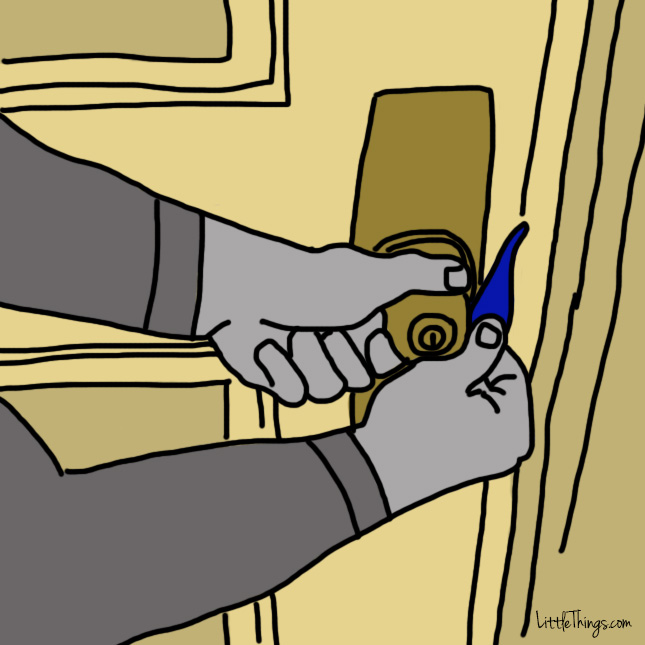
According to The Washington Post, a burglar’s favorite point of entry is your front door, so it’s imperative that you do everything you can to keep it secure as possible.
The first step is buying a door that is solid rather than hollow and made of steel, fiberglass, or solid wood.
Yet, even if the doors are made of these kinds of materials, Consumer Reports found that this is not the only precaution you should take. You should also:
- Reinforce you knob locks, or the locks that are directly on the doorknob. These can easily be jimmied with a credit card. Install a bolt lock for extra security.
- Secure the door’s hinges with 3-inch screws.
- Look into replacing your knob lock with locks that have an internal anti-saw pin that makes it difficult for a thief to saw through the bolt with a hacksaw. Some locks even come with hardened steel chips inside the lock that will destroy a drill bit if a burglar tries to drill through the lock.
- The casing, which is the frame that houses the lock, should be made out of hardened steel. This makes the lock more resistant to impact.
Safety Tip #2: Secure sliding glass doors and windows.
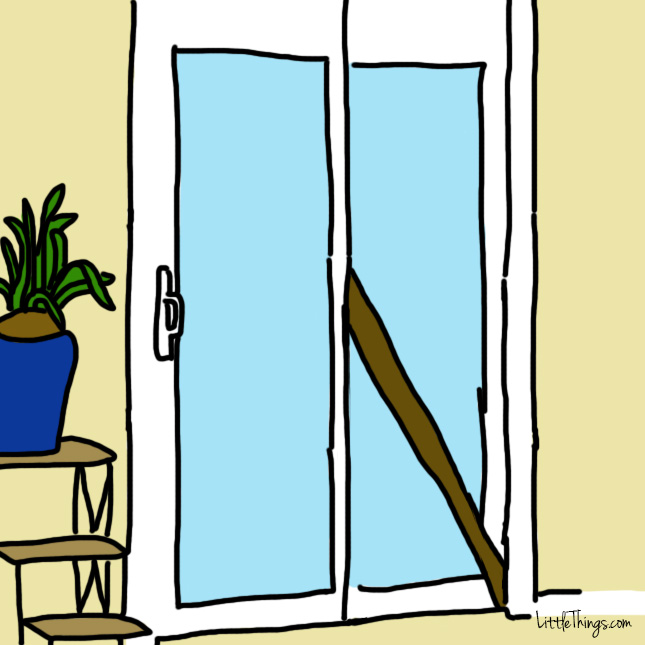
According to the FBI, 30 percent of break-ins are unlawful entry, which means a perpetrator found an open or unlocked window or sliding-glass door and let himself in.
Because of this, it’s always smart to lock your windows — even if they’re on the second floor or your home. If you’re not home, a great way to give your windows and sliding-glass doors extra security is by installing stops that prevent them from being opened more than 6 inches. However, if you do this, you need to show everyone in your home how to remove these stops in case of an emergency.
An even easier thing to do is to place a metal or wooden rod in the track, or across the panel, thus preventing it from being opened from the outside.
Safety Tip #3: Keep your yard tidy.

It sounds sort of weird, but keeping your yard trim and tidy is also a fantastic and affordable way to keep your home safe. Think of it this way: An overgrown lawn suggests that someone is not home to care for it, which makes a burglar believe it’s safe to enter a home.
A yard full of clutter can also help a thief get into your house. For instance, if you leave a ladder in plain sight, it can be used to access the roof or a second story window that may not be locked. Tree limbs that are close to the roof can be used to climb up to the roof as well.
It’s also wise to trim your hedges. Tall shrubs provide a thief with a great place to hide and stake out your patterns, like what time you leave in the morning and what time you get home at night.
Safety Tip #4: Get to know your neighbors.
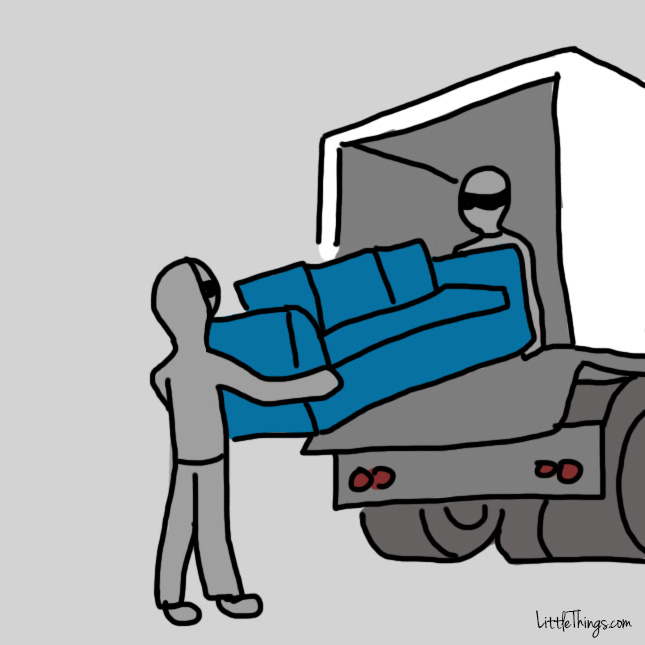
It’s always a good idea to get to know your neighbors. But when it comes to protecting your home from burglary, it can be invaluable.
If you go out of town, a trusted neighbor can collect mail and newspapers instead of letting them pile up on your porch, which can be telltale signs you’re not home. They can also take care of your garbage or keep up with any other weekly patterns you usually do.
According to HowStuffWorks.com, many homeowners have become victims to the ole' moving truck trick. If burglars know that homeowners are out of town, they will pull up to the house with a truck and pack the truck with a victim’s possessions in broad daylight, making it appear like an innocent move when they’re actually getting away with grand larceny.
Yet, if your neighbors are aware that you’re out of town, they can call the cops before things get out of hand.
Safety Tip #5: Be bright about your lights.
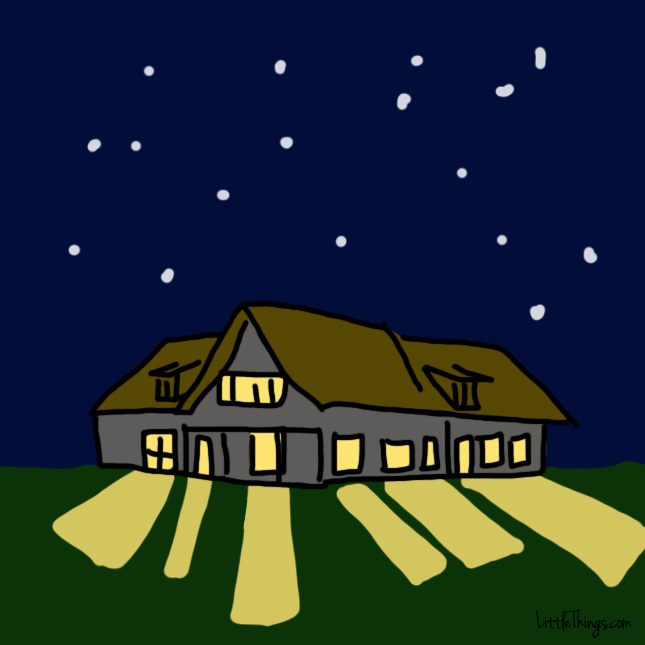
If we see a light on in a house, we assume someone is home — and so do thieves.
Having a light on is always a bright way to discourage a burglar from trying to break into your home. Investing in indoor and outdoor lights with timers or motion detectors is a wise thing to do, but it can also be costly when you consider installation fees and utilities.
For a less costly alternative, consider an affordable gizmo called FakeTV. The gadget uses the same amount of energy as a nightlight to make your TV glow even when it’s not on. That way, if someone is looking into your home from a distance, it looks like someone is home watching TV. Best part? It only costs about $40.
Safety Tip #6: Keep crooks on their toes.

You never know whether or not a burglar is staking out your property. But there are a few very simple things you can do on a daily basis that will keep anyone spying on you on their toes.
One smart trick we’ve already mentioned is to make it appear like there is always someone home — even if there isn’t. One way to reinforce this is by pretending to say goodbye and waving to “someone” in another room whenever you leave the house, even if there’s no one there. That way, if someone is watching you, they’ll think you said goodbye to someone else who's still at home.
Another great trick is to always park your car in the garage with the garage door closed instead of in your driveway. That way, if someone is trying to pick up on your patterns, a car missing from the driveway won’t tip them off.
Also, never leave notes on your door to for neighbor or delivery people — they’re a dead giveaway that you’re not home.
Safety Tip #7: Place signs around your home that say you have a security alarm.
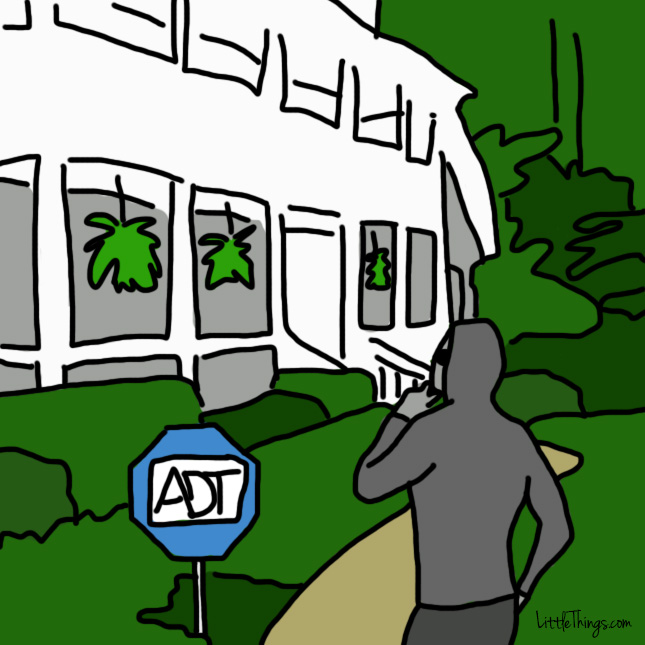
According to the FBI, 60 percent of all break-ins are forcible entries, which means something was broken in order to gain access to your home.
What crooks often do is knock on your door, and if no one answers, they break in.
Alarm systems that go off when a window is shattered or door is kicked in are extremely helpful but can be costly. If you can’t afford one, fake alarm signs can deter a burglar from targeting your home in the first place.
Safety Tip #8: Don’t hide spare keys; give them to neighbors.
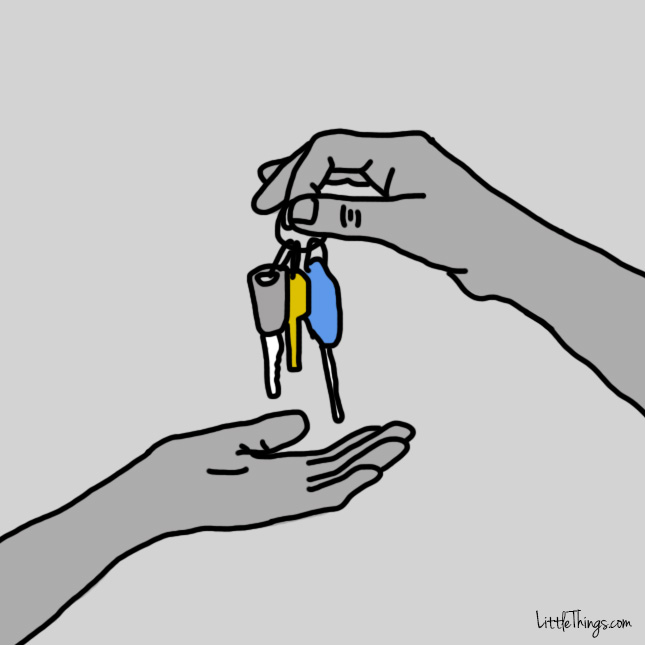
Most thieves know that many of us hide spare keys under a flowerpot, rock, or some other easy-to-find spot.
Outsmart crooks by giving a spare key to a trusted neighbor — or two, in case one is not home when you need it. That way, if you’re ever locked out, you can ask them for the spare rather than making a key to your property available to burglars.
Safety Tip #9: Be smart about social media.
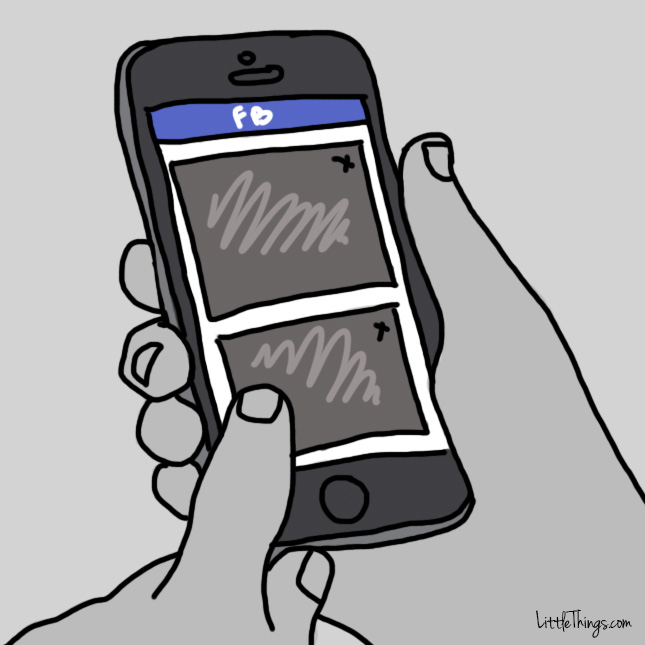
We love to share on social media. But if you’re traveling, think twice about what you post.
For instance, an innocent Tweet or Facebook message that says “I’m going to Austin for the weekend, where’s the best place to get barbecue?” is announcing publically that you will not be home at a certain point, making you a possible target for burglary.
Also, try to post pictures from a vacation AFTER a trip rather than in real time, and if you live with kids or teens, make sure they do the same. Even innocently posting a picture of yourself tanning on a beach when you your online profile says you’re from Minnesota is a dead giveaway that you’re not home.
Safety Tip #10: Embrace technology.
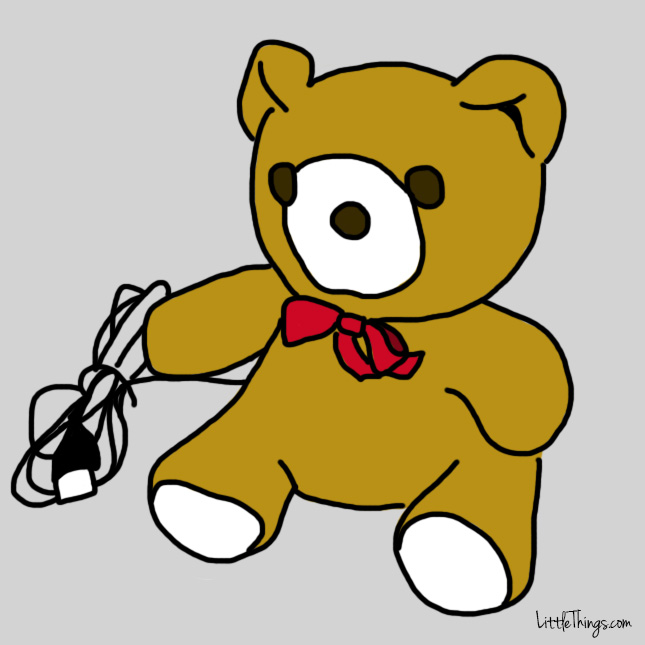
Many thieves use the Internet to post break-in tips and tricks. Newbies offer their latest ideas while old-timers chime in to share their biggest successes.
It’s impossible for the homeowner to keep up with all every one of the latest thievery tricks or even find the secret sites where crooks post — but it isn’t for a reputable security expert.
Get savvy on the web and find a local and trusted professional through sites like Yelp and Angie’s List, and have them inspect your property and offer advice.
It may also be wise to invest in a few small webcams on Amazon. These tiny cameras can be hidden all over your home, on bookshelves or even inside of an innocent teddy bear, and can record a perpetrator in the act.
Do you have a certain thing you do to keep your home safe that we didn’t cover? Let us know in the comments!
Please SHARE this important information with everyone you love!


